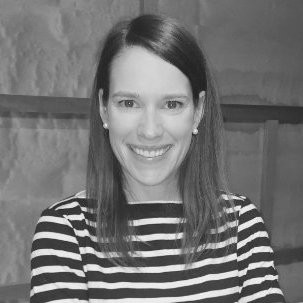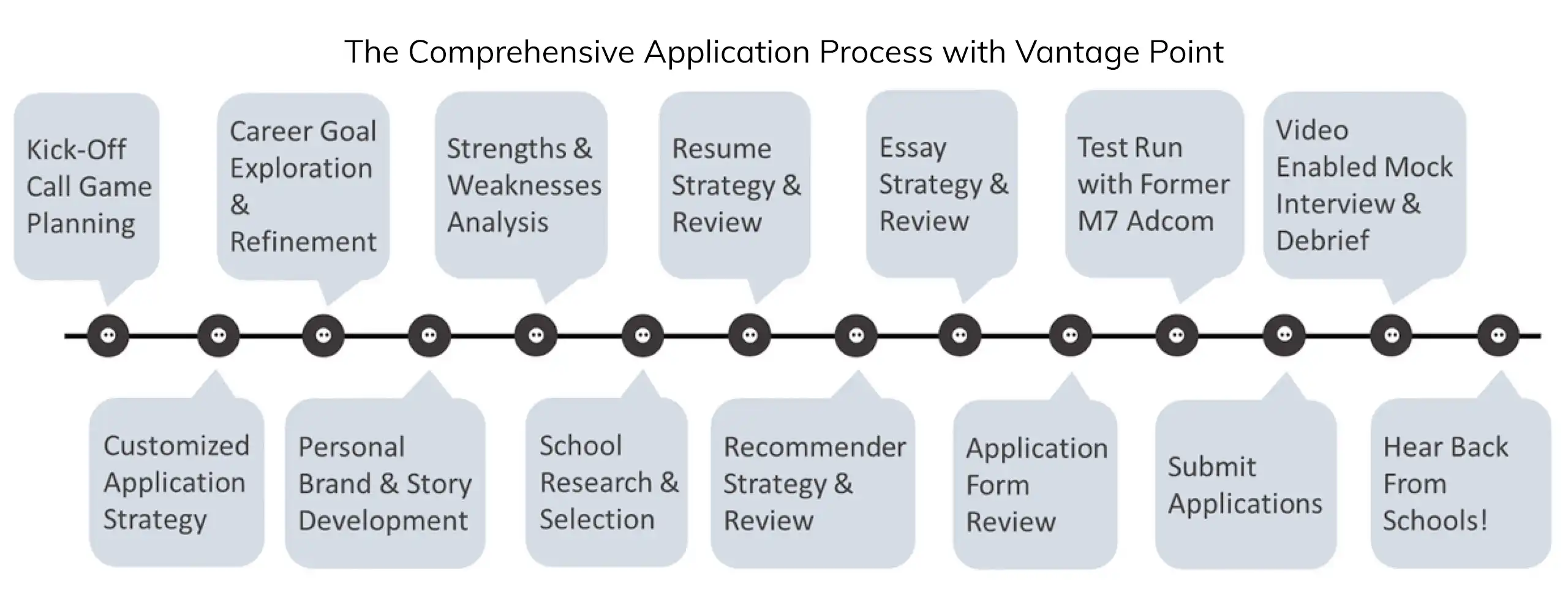MBA Program Selection: How to Decide Where to Apply
MBA program selection is invariably one of the first things we discuss with our MBA admissions consulting clients. While they often hope we’ll quickly help them narrow down their list of target schools, it’s just not that simple. In fact, how to decide where to apply is a question that takes some diligence, and perhaps some introspection, to answer.
Why MBA Program Selection Matters
It’s important to be thoughtful about school selection for a couple of reasons. First, the application process is expensive and time consuming. You want to limit your list to a small number of schools that make the most sense for you while maximizing your chances of admission. In other words, you want to maximize the ROI of your application efforts.
Second, “fit” plays a huge role in the admissions process. If you don’t make the effort to research which MBA programs are right for you and why, you’ll have a hard time articulating that in your essays and convincing the adcom that their school is the right place for you.
How To Decide Where to Apply
So, let’s dive into a great way to approach the MBA program selection process.
MBA Program Selection Step 1: Know your range
A great place to start choosing schools is the rankings (stay with me here!). You’ll find that they differ, sometimes significantly, so familiarize yourself with a few of them. With your GMAT score and undergraduate GPA in hand, you can go down the rankings lists (or use our program comparison tool) to find the programs where your stats meet the average. That will give you a good idea of the range of schools where you’re competitive and where you’re a bit of an outlier.
Other factors will then skew your range up or down slightly. You may need to do some additional research to understand how your work experience compares to past admitted students, for example. Similarly, nationality can work for you or against you, depending on how many applicants from your country apply to your schools. If you’re not sure where you stand, this is a great opportunity to get a profile review by a professional through the forums or through the free consultations that most of the admissions consulting firms offer.
We’re not saying you shouldn’t apply to your dream school even if you fall outside of its range. Just hedge your bets with a few “safer” schools. (No top school is “safe”, but there will be programs where your profile is more competitive than their averages.)
MBA Program Selection Step 2: Narrow down from there
Once you have an idea of where you’re competitive, then you can really start figuring out which MBA programs are right for you. Here are six factors to consider as you decide where to apply.
Teaching method:
Most of the top MBA programs use a combination of lectures and experiential learning (think immersion classes, team-based exercises, etc.). At HBS and Darden, however, the case method dominates most of the curriculum and it creates a unique classroom dynamic (relies on class participation – students do 85% of the talking in class, involves cold-calling, requires thorough preparation of the case prior to class, etc.). Think about how you learn best and factor that into your MBA program selection process.
Academic strength or research focus:
While all the top MBA programs offer a general management education with a broad selection of electives, certain programs may offer greater resources or specific programming dedicated to your area of focus. For example, Columbia has the Value Investing Program, Wharton has the Health Care Management major, NYU Stern has the Luxury Marketing specialization, etc. Depending on which industry or function you’re targeting after business school, it may make sense to apply to programs that have a strong legacy in that field, either from the strength of the curriculum, breadth of electives, caliber of the faculty, prominence of research, or otherwise.
Recruiting power:
This goes hand in hand with the previous point. Applying to schools that have a history of placing graduates in your dream job(s) simply makes sense. Dig into schools’ employment reports to understand who recruits where and on what scale. All the top schools will have diversified employment reports, but you may see some bias. Wharton towards private equity or Yale towards social impact, for example. Don’t automatically write-off a school simply because your target industry isn’t at the top of their list. It’s simply another factor to consider in your MBA program selection process.
Class size:
This one really boils down to personal preference. HBS and Wharton, for example, have large class sizes (>850 students) while Haas and Tuck have more intimate class sizes (<300 students). It’s important to understand the pros and cons of each and determine which one is better aligned with your objectives. For example, small programs boast tight-knit, congenial communities while larger programs offer greater breadth and diversity in each class.
Culture:
This one is a bit trickier to figure out, especially when you’re just starting the research process. It’s hard to really understand how the schools are different from simply browsing their websites. This is where engaging with the school (visiting campus, attending info sessions, etc.) and speaking with alums and current students really pays off. After a few discussions, you’ll start to get a sense for how the programs are different from each other.
In terms of which culture is right for you, that’s a matter of personal preference. If you have a fierce independent streak, then maybe Booth is right for you. On the other hand, looking for a supportive, team-oriented environment? Kellogg or Tuck may be right up your alley. Lastly, we’ll say that while certain programs may have “reputations” that you’ve heard of, we recommend doing your own independent homework and deciding if you agree or not (they’re often over-stated, over-simplified, or outdated).
Location:
Try to be flexible here. It’s only for two years and all the top programs have widely influential brands that won’t limit your post-MBA geographic options. On the other hand, if your post-MBA goals are concentrated in a specific geography (i.e., NYC for finance and fashion, Bay Area for tech, etc.) then it does make sense that programs in those areas would rise to the top of your list. If you have a strong affinity for urban vs. rural locations, don’t ignore it entirely – just don’t let geography be the sole deciding factor.
MBA program selection is more art than science. Start early and you’ll begin to get a “gut” sense for the programs that are right for you on multiple levels. Try to keep an open mind while remaining true to yourself and your goals. An MBA from a top school is way too expensive for you to be anything less than 100% happy and excited about the two years that lie ahead.
If we can be of assistance with your MBA program selection process or with your applications more generally, reach out to schedule a free consultation. If you’d like to read about some of our clients who gained acceptance to their perfect MBA program, click here.
After embarking on my own MBA journey, I co-founded Vantage Point MBA Admissions Consulting to help aspiring business school students get accepted to the top MBA programs in the U.S. and Europe. As President, I currently lead a team of over 25 superstar consultants to give our clients an unmatched experience, with a focus on white glove, personalized collaboration and mentorship.





Pingback: Acceptance Rates at Top MBA Programs | Vantage Point MBA
October 12, 2023 4:53 pmPingback: The Best MBA Programs for Technology - Vantage Point MBA
April 4, 2024 11:11 pmPingback: The Best MBA Programs In Technology - Amazing
April 9, 2024 7:13 amPingback: Why Applicants Can Ignore the 2024 U.S. News MBA Ranking - Vantage Point MBA
April 12, 2024 1:41 amPingback: Acceptance Rates at Top MBA Programs | Vantage Point MBA
May 23, 2024 9:01 pmPingback: 7 Signs You Are Ready to Apply to MBA Programs this Year
July 12, 2024 3:54 pmPingback: How MBA Admissions Consultants Charge | Vantage Point MBA
February 20, 2025 5:13 pm